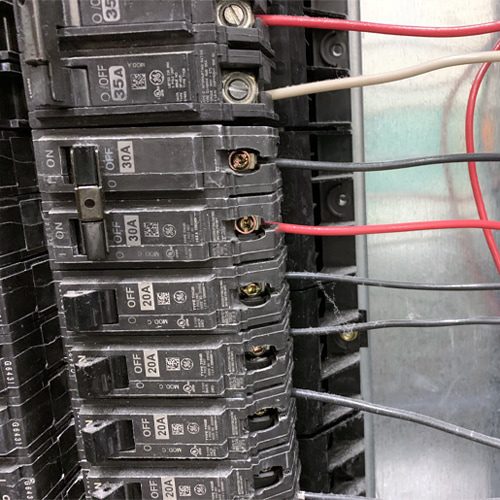Leading Tips for Effective Electric System Troubleshooting
Fixing electric systems requires a systematic strategy, grounded in a detailed understanding of electrical principles and security protocols. The nuances of effective fixing expand past mere technical knowledge; understanding exactly how to record searchings for and focus on safety can substantially affect results.
Understand the Basics
Recognizing the essentials of electrical systems is important for effective troubleshooting, as a solid structure permits specialists to identify and deal with problems a lot more successfully. A detailed grasp of electric concepts, such as voltage, present, resistance, and power, is vital in identifying the root creates of problems. Voltage is the electrical potential difference that drives existing via a circuit, while resistance opposes the circulation of existing, affecting the total capability of the system.
Familiarity with circuit elements, including resistors, capacitors, diodes, and switches, is also critical. Each element plays an unique function in circuit actions and can influence performance when malfunctioning. In addition, comprehending collection and identical circuit configurations is essential, as these arrangements influence the distribution of voltage and present within the system.
Furthermore, expertise of safety and security protocols is crucial. Specialists should understand possible dangers, such as shock and short circuits, to implement safe troubleshooting practices. By mastering these foundational concepts, professionals enhance their ability to conduct effective diagnostics and repairs, eventually bring about improved efficiency and reliability of electric systems. This fundamental expertise is the foundation of successful fixing endeavors.
Gather Necessary Equipment
Efficient troubleshooting of electrical systems calls for the appropriate collection of tools to diagnose and deal with concerns precisely. A well-appointed professional can considerably enhance effectiveness and efficiency in identifying problems. Vital devices consist of a multimeter, which measures voltage, existing, and resistance, allowing for specific evaluations of electric components. Clamp meters are additionally useful for gauging current without detaching the circuit, ensuring security and convenience.
Furthermore, protected hand devices such as screwdrivers, pliers, and cable strippers are important for safely controling electrical connections. It is also advisable to have a circuit tester available to verify the visibility of voltage in electrical outlets and cords. For more complex systems, a thermal imaging video camera can assist detect overheating components, indicating possible failings.

Follow an Organized Approach
Having actually gathered the proper devices, the following action in repairing electrical systems is to comply with a methodical method. A systematic technique guarantees that professionals can identify faults effectively and properly, minimizing downtime and protecting against unneeded repair work.
Begin by evaluating the system's schematic layouts and specs. Comprehending the layout and functional specifications will give context for detecting problems. Next off, separate the trouble location by utilizing a procedure of removal. This involves monitoring each component systematically, beginning with the power resource and working in the direction of the load.
Make use of screening equipment, such as multimeters and oscilloscopes, to gather objective data concerning voltage, current, and resistance at different factors within the system. This empirical proof will certainly lead your troubleshooting efforts and help to validate or remove potential causes of failure.
In addition, consider environmental elements that may affect the system's performance, such as temperature changes or wetness access. A comprehensive inspection of circuitry, connections, and components will make certain that all opportunities are made up.
File Your Findings
Extensive documentation is important in the troubleshooting procedure of electric systems. This method not only help in comprehending the root cause of the trouble however also offers as a recommendation for future troubleshooting initiatives.

Furthermore, preserving a log of components replaced or repairs performed is invaluable. This information sustains inventory administration and can aid analyze the durability and integrity of certain elements.
Inevitably, the documents procedure need to be comprehensive yet succinct, making it possible for easy access and evaluation - electrical system troubleshooting. By prioritizing comprehensive documentation, service technicians can develop a valuable knowledge base that not only help in current troubleshooting however likewise empowers future maintenance initiatives, thereby enhancing overall system reliability

Prioritize Precaution
Identifying the fundamental risks linked with electric systems is crucial for making Website sure safety throughout troubleshooting. Electrical shock, burns, and equipment damage are simply a few of the possible dangers that service technicians deal with. Focusing on precaution is not only a legal obligation however also an ethical vital that safeguards both the service technician and the surrounding setting.
Before starting any kind of troubleshooting job, specialists should put on ideal personal protective devices (PPE), including protected gloves, safety and security glasses, and flame-resistant clothes. Making sure that the workspace is completely dry and devoid of mess can substantially reduce the threat of crashes. It is important to de-energize circuits before starting any kind of work, verifying that they are not live via the usage of a multimeter or voltage tester.
Establishing clear communication protocols with team members is also vital; this makes sure that every person understands prospective risks and the use this link standing of the electrical system being worked with. Having an emergency response strategy in area can verify important in the event of an incident. By prioritizing precaution, technicians can properly alleviate threats and foster a much safer workplace.
Final Thought
Efficient electric system repairing relies on an extensive understanding of basic concepts and a systematic technique. Focusing on security steps guarantees the well-being of people included and the integrity of the electric system.